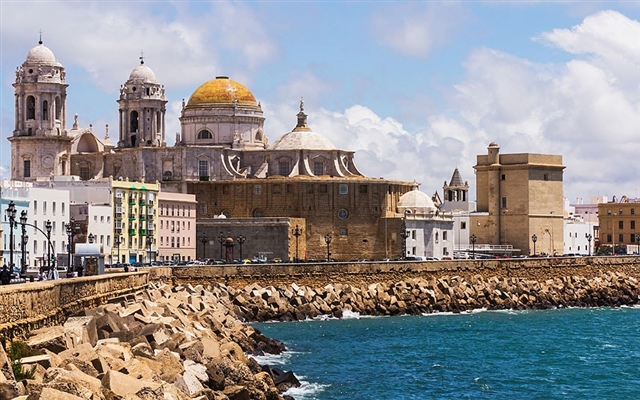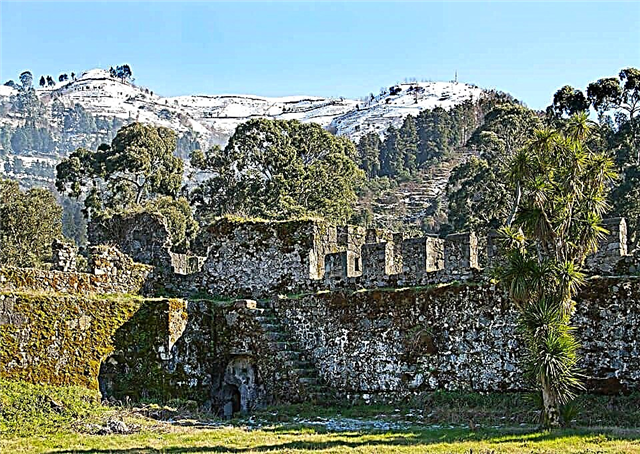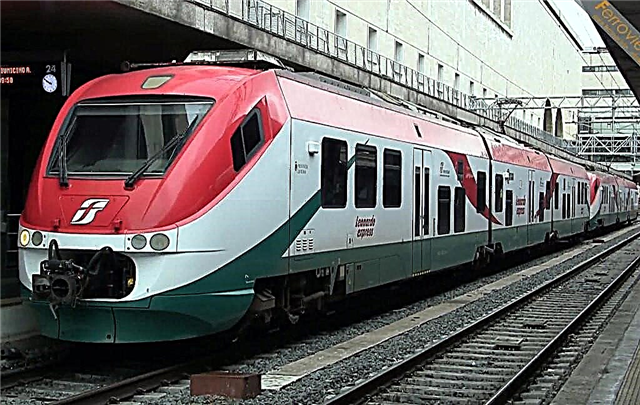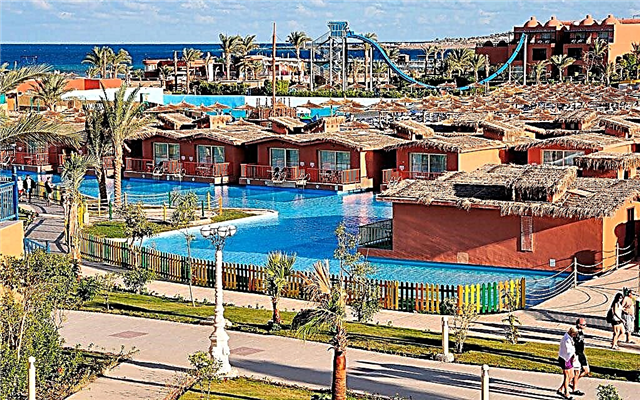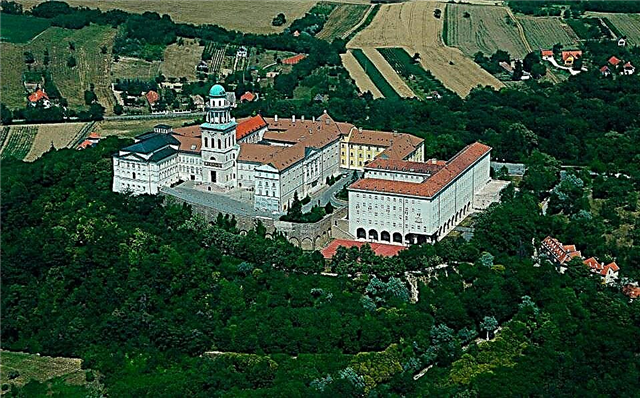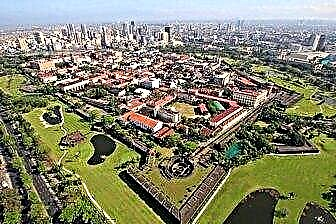Address: Russia, Yaroslavl region, Rostov the Great, st. Engels, 44
Foundation date: 1389 year
Main attractions: Cathedral of Demetrius of Rostov, Church of the Conception of Anna, Church of Jacob of Rostov, Chapel of Jacob of Rostov, bell tower
Shrines: the relics of St. James of Rostov, the relics of St. Demetrius of Rostov, the cell image of St. Demetrius - the miraculous Vatopedi icon of the Mother of God "Joy" or "Consolation", particles of the relics of St. Abraham of Rostov, particles of the relics of the venerable Kiev-Pechersk saints and other saints, the image of the righteous , icons of the Mother of God "Tenderness-Rostov" and Shestokovskaya
Coordinates: 57 ° 10'28.4 "N 39 ° 23'31.7" E
Content:
Monasteries of Rostov the Great
The ancient history of the Spaso-Yakovlevsky Dimitriev Monastery dates back over six hundred centuries. After his return to believers in the early 90s of the last century, extensive restoration work was carried out on the territory and churches were repaired. The monastery became the first among the restored ones in the city. And today it is a place of pilgrimage and a remarkable tourist site for numerous guests of Rostov the Great.

General view of the Spaso-Yakovlevsky Dimitrievsky Monastery
The life of St. Dmitry
Dmitry was born in 1651, at the age of 16 he was tonsured a monk and until the age of 23 he lived in the Kiev Cyril Monastery. Later he became a clergyman and gained the glory of a spiritual preacher, having devoted several decades to compiling the biography of the saints of the Orthodox Church - four books of the Chetya-Menaion, writing the spiritual alphabet, many dramas and poems.
The last 7 years of his life (until 1709) Dmitry spent in Rostov. He is highly revered by the believers of Russia for his contribution to the development of education, the fight against ignorance and drunkenness, as well as for polemics with adherents of the Old Believer faith and Catholicism. 48 years after his burial, Dmitry was canonized. Today, the shrine with the relics of St. Dmitry is in the monastery Church of the Conception.

View of the Spaso-Yakovlevsky Dimitriev Monastery from Lake Nero
History of the Spaso-Yakovlevsky Dimitrievsky Monastery
On the shore of the lake, where the complex of the modern monastery rises, from the middle of the XIII century there were temples of the women's monastery. Its founder is considered to be Maria, who was the daughter of Prince Mikhail. She was married to the Rostov prince Vasilko Konstantinovich. In 1238, a terrible tragedy entered the life of Mary. The princess lost her spouse, who died during the battle with the Tatars on the Sit River. Having become a widow, Mary lived in the new Spaso-Pesotsk monastery until her death, and shortly before her death she was tonsured as a nun. In honor of her, the monastery was called Knyaginin for a long time. Today, the preserved Church of the Savior on the Sands serves as a reminder of the ancient women's monastery.
The history of the male monastery begins 150 years later than the female monastery - in 1389. They began to build it next to the Knyagin's monastery, thanks to the decision of the bishop of the Rostov diocese, St. James. Initially, the new monastery was called Zachatievsky, and after the death of Jacob, the monastery began to be called by his name.

View of the Spaso-Yakovlevsky Dimitriev Monastery from Lake Nero in winter
Over time, churches in both monastic territories fell into disrepair. In the 60s of the 18th century, the richer convent was abolished by the decree of Empress Catherine II, and its lands and buildings were given to the convent. The fresh breath of monastic life came with Metropolitan Jonah, who became famous for the erection of the stone Rostov Kremlin. In the late 80s - early 90s of the 17th century, the Metropolitan invested in the construction of a brick church over the burial place of St. James and built the old Church of the Conception in stone. The monastery itself at this time began to be credited to the Bishop's house in Rostov, and this saved the monastery from ruin.
At the beginning of the 1700s, Saint Demetrius settled within the monastery walls, fulfilling the duties of a metropolitan in the Rostov diocese. He lived here for the last seven years of his life and was buried in the Conception Church. To store his relics, Empress Elizaveta Petrovna ordered a beautiful reliquary made of Kolyvanov silver. But the death of the empress prevented the transfer of gifts to the monastery. Therefore, in 1763, a new queen, Catherine II, was present at the festivities dedicated to the laying of the relics of St. Demetrius in the shrine.
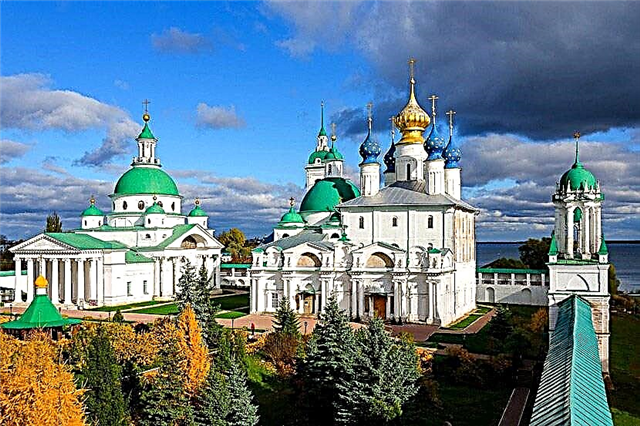
From left to right: Dimitrievsky Cathedral, Yakovlevskaya Church, Conception Cathedral
In the second half of the 18th century, many stone buildings grew on the monastery territory, which replaced dilapidated wooden buildings - a fence with corner and gate towers, a new church and a bell tower, as well as various buildings for brethren and household needs. A little later, a huge temple was built in the monastery, consecrated in honor of Dmitry Rostovsky.
After the stone church of Jacob was rebuilt on the territory of the monastery in the 30s of the XIX century, the monastery took on the appearance we know today. It grew into a complete architectural ensemble that delighted everyone who visited the ancient Russian city with its massiveness and grandeur.

From left to right: North Gate, St. Demetrius Cathedral
With the onset of a new Soviet period in the history of Russia in 1923, the monastery was closed. And after 5 years, it was forbidden to hold services in all of its churches. The premises of the fraternal cells were transferred to a kindergarten, for apartments, a military base and warehouses. During these years, the monastery lost almost all of its valuable utensils. Only in 1991 the monastery was returned to the believers, and it took several years to restore and restore it.
Architectural monuments on the territory of the Spaso-Yakovlevsky Dimitrievsky Monastery
The very first monastery buildings were wooden and have not survived. The cathedral, consecrated in honor of the Conception of Righteous Anna, was erected in 5 years from 1685 to 1691. This church has no basement. In monasteries, unlike parish churches, there was no need for a basement that served as a warehouse. Initially, the cathedral was covered by a podzakomarno, but over time, a more practical four-pitched roof was made for it.

Conception Cathedral
The temple is five-domed. Its central gold head is set on a powerful light drum, while the rest of the blue ones, decorated with gold stars, rest on smaller deaf drums. Such a combination of colors in Christian traditions is associated with the name of the Mother of God. Surprisingly, the old wall paintings made by famous Yaroslavl iconographers have been preserved in the cathedral.
In the 60s of the 18th century, a magnificent wooden gilded iconostasis was carved for the temple by masters from Ostashkov. Almost two decades later, the icons for him were painted by the artist Venedikt Vendersky, who worked at the court.

Dimitrievsky Cathedral
The huge Dmitrievsky Cathedral was built in the traditions of classicism in the late 18th - early 19th centuries with funds allocated by Count Nikolai Petrovich Sheremetyev. The cathedral is crowned with a small dome on a large dome. It is decorated on all sides with large porticos with columns and bas-reliefs. And the painting of the walls inside the cathedral belongs to the brush of the famous Yaroslavl iconographer Porfiry Ryabov. The Yakovlevskaya church was rebuilt many times. The last time this happened was in the 19th century, when the temple was dismantled almost to the ground and rebuilt. The architects tried to give its proportions and external decor a resemblance to the larger Dmitrievsky Cathedral.
To the east of the monastery churches there is a large three-tiered bell tower, which appeared here in the 70s of the 18th century.This is the tallest building of the monastery, decorated very strictly and organically fits into the architectural ensemble of the monastery. Brick buildings of urgent and fraternal buildings, as well as outbuildings were erected in the tradition of classicism in the last third of the 18th century.

North gate
The current state and regime of visiting the Spaso-Yakovlevsky Dimitrievsky monastery
Today, brethren of 15 people live on the territory of the monastery. The monastery devotes a lot of time and effort to research and publishing activities - they hold international conferences and seminars, publish books on the history of Rostov, the monastery and the life of St. Dmitry. It has its own library, sacristy, icon painting and production workshops, the School of Arts and Music, and a Sunday school. In addition, local work on the restoration and repair of buildings is constantly being carried out on the territory.
To provide the monastery's economy, there is a bakery, a laundry, a prosphora, a bathhouse, and work is also underway in their own gardens, hay meadows and a barnyard. For all comers, the monastery sells delicious bread of its own baked goods, which outwardly resembles a tall Easter cake.

From left to right: South (Water) Gate, South-East Tower
You can get to the territory of the monastery any day freely, for everyone - both pilgrims and tourists. Here it is allowed to conduct free amateur photography and video filming. And for organized groups there are excursions. Tourists can visit one of the towers of the monastery walls, which offers magnificent views of the lake, temples and the entire monastery complex.
Walking around the monastery is very pleasant. Its territory is paved with neat paths. Inside the monastery walls there is its own young apple orchard, as well as beautifully decorated flower beds, lawns and avenues of berry and ornamental shrubs. A wooden chapel was built in the center above the spring.

Chapel of Jacob of Rostov over the Holy Spring
Morning services in the temples of the monastery are held on weekdays at 7.30, and on weekends and holidays - at 9.00. Evening services - daily at 17.30.
How to get to the Spaso-Yakovlevsky Dimitrievsky monastery
The monastery is located in Rostov the Great on the shore of Lake Nero at 44 Engels Street.
By car. The federal highway M8, connecting Moscow and Arkhangelsk, leads to Rostov. From the capital to the city - 220 km, and from Yaroslavl - 55 km. Upon reaching the railway station, you need to turn towards the city center. From here, following Lunacharskogo street, drive towards the Rostov Kremlin. And from the Kremlin - move along the street. Lenin to the intersection with st. Moskovskaya, where turn left towards Lake Nero. Soon a panorama of the monastery walls opens.

From left to right: Rector's building, Refectory building, Cell building
On your own by train and bus. It is convenient to get from the capital to Rostov by Yaroslavl express trains. They leave twice a day - at 8.20 and 16.20. The train goes to Rostov for about three hours. You can get to the monastery from the center of Rostov by regular buses or minibuses.


